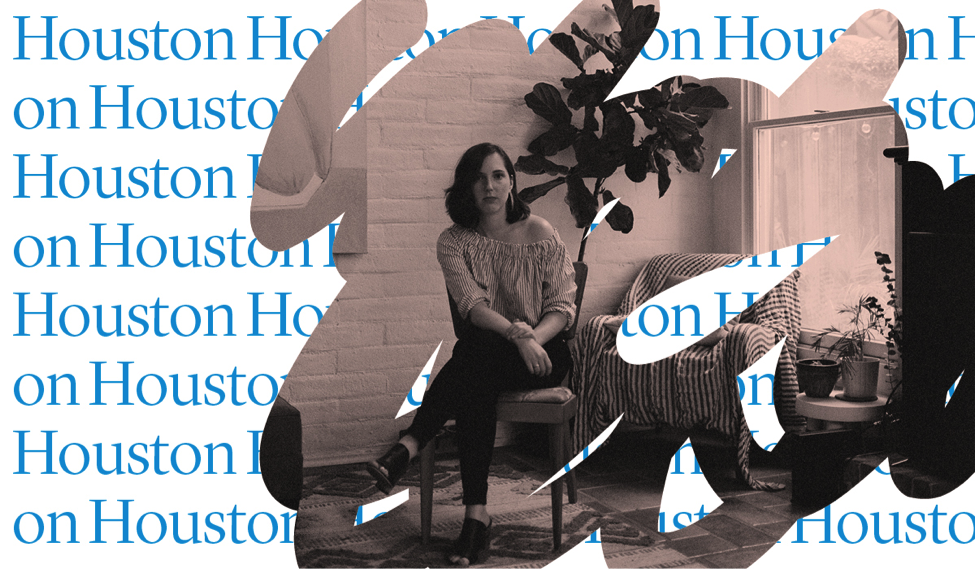As the Office of Alumni Relations launches its first regional networks, laying the groundwork for Pratt connections to flourish in the many places alumni do their work, Prattfolio* checks in with six local influencers across the United States who are helping to make their cities hubs of creativity and innovation. In part two of six, Ashlyn Davis, BA History of Art and Design ’10, discusses her work as executive director of Houston Center for Photography.
Texas native Ashlyn Davis returned to her home state to further her art history education, and she stayed for the rich, creative culture and accessibility she found in Houston. A scholar in American studies focusing on the history of photography, Davis has centered her work with the Houston Center for Photography (HCP), where she became executive director last year, on growing its programs that serve the region while connecting the art world of Houston with the global creative community.
What drew you to Houston?
For a writer and art historian, Houston has some incredible resources. One of my current favorites is a collection that is still growing—the Manfred Heiting Photography Book Collection at the Museum of Fine Arts, Houston—which consists of over 25,000 volumes of an astonishing range of photobooks. It’s a photobook lover’s dream. Texas, in general, has such wonderful institutional dedication to photography—at the Amon Carter in Fort Worth; the Harry Ransom Center in Austin; the Museum of Fine Arts, Houston; along with noncollecting institutions like HCP.
What opportunities attracted you to HCP?
As a photography-specific art space, HCP is a very special place for me. I have gravitated toward midsize art institutions like HCP because we are not at the mercy of the art market, and we’re also small enough to remain flexible and responsive to the world. We can show work that otherwise would not be shown in the region because of the artist’s emerging status or the challenging conversations the work creates about current issues. At the moment, I’m excited for our next year of exhibitions, which discuss important contemporary issues such as intersectionality and identity, borderlands, and the intentional construction of family.
How do you see the HCP having a transformative impact on the city?
When HCP began in 1981, it was a passion project for a bunch of photographers in Houston. They turned a convenience store into a gallery in a matter of months and developed exhibitions, fellowships, an education program, a fine art publication, and community-impact projects that continue to this day. We also have one of the only free, open-to-the-public photography book libraries with more than 4,000 volumes; we’re one of the only nonuniversity spaces that teach photography; and we’re the only gallery in the city dedicated exclusively to supporting photographic artists at every stage of their career.
Is there a program that has had a particularly meaningful outcome?
I’m continually amazed at the impact of our Access and Community Education programs, which work with students all around the Houston area, both on-site in our gallery and off-site through “the Flash Drive,” our camera obscura on wheels. One of these programs is Girls’ Own Stories, which works with young, at-risk girls between the ages of 8 and 14. We show them the work of other important women artists and do photographic projects that explore issues of self-esteem, body positivity, and empowered decision making.
What opportunities do you see in Houston for artists and creative practitioners today?
Houston is a world-class art city and easily rivals Los Angeles and New York City in many ways. At the same time, it’s young enough in its growth and has such an incredible support system to experiment and work outside traditional frameworks. There’s diversity to what’s being created and shown, as well as a unique accessibility to art. In a day, you can see an in-depth contemporary Latin American exhibition at the Museum of Fine Arts, Houston; walk into the Cy Twombly Gallery or the Dan Flavin installation on the Menil Campus; see a pop-up exhibition in someone’s apartment; and encounter amazing public art on your commute home.
How does the experience you had at Pratt influence the work you do today, particularly in terms of making space for art?
One of the most unique aspects of studying art history at an art school was that I was required to develop my own artistic practice through hours of drawing classes, performance art classes, photography studios, and so on, which allowed me a much more intimate understanding of the artistic process—but it was also important to be surrounded by other ambitious creators. Many people think back on their time in college and think of their sports teams or sororities. Instead, I’m proud of the salons we held in our apartments, the exhibitions and performances we put on around campus, and the publications we produced. We were empowered to be independent creators, but also community builders, and that’s something that has shaped every project I’ve worked on.
*This article was originally published in Prattfolio (Fall/Winter 2017). Read the issue at www.pratt.edu/alumni. Learn more about the Alumni Regional Networks.
Portrait by Cary Fagan
